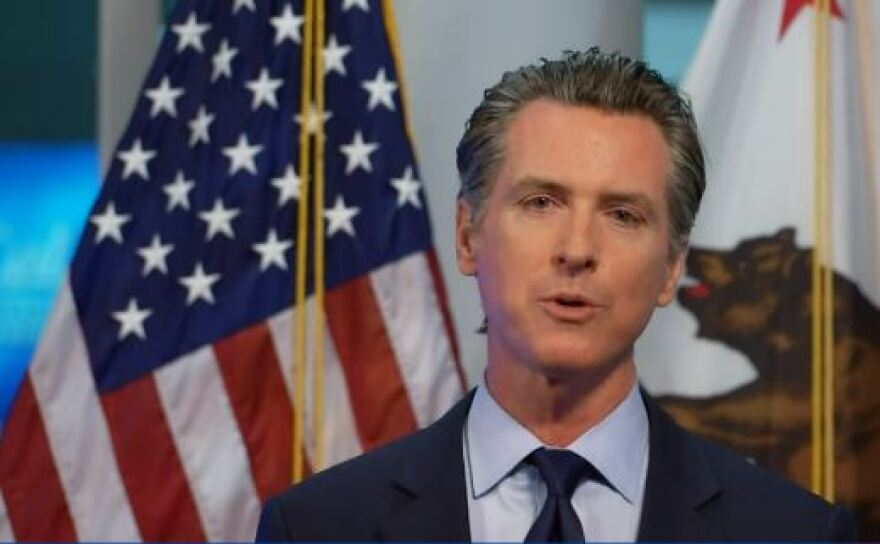Gov. Gavin Newsom introduced a new, six-point plan on Tuesday for how California might gradually lift its stay-home order.
It includes everything from ramped-up testing to protecting at-risk residents. And the governor suggested long-term, dramatic changes to life in the Golden State — everything from staggered school schedules in the fall and temperature checks enter businesses to “massive deep cleaning” and sanitation of public spaces.
“Normal, it will not be, at least until we have herd immunity and have a vaccine,” the governor said of post-quarantine life.
He did not discuss a timeline or date for when the plan might be implemented. Instead, Newsom urged people to continue to remain in their homes until the “curve” of new COVID-19 patients is “not just flattening, but declining.”
Dr. Sonia Angell, director of the state’s public health department, presented details of what officials are looking at as it considers lifting parts of the stay-home order.
improving ways to “monitor and protect” residents through expanded testing and contact tracing capacity, and ways to help those who are exposed or contract the illness
expanding the “ability to prevent infection” among those at higher risk, including seniors, people with pre-existing medical conditions and individuals who are incarcerated
increasing the ability of hospitals and health systems to handle surges of COVID-19 patients
developing treatments, including vaccines and other therapeutics
increasing ways to physical distance at businesses, schools, child care facilities, etc.
establishing a protocol to reinstitute stay-home measures if there is another outbreak
Angell emphasized that things “won’t look the same” in our lives for a while.
“Restaurants will be likely to reopen, but perhaps they’ll have fewer tables,” she said. “Face coverings will likely become common in public.”
She added that physical distancing will remain a part of our lives until there is a majority of the population immune to the virus.
Newsom declined to explore a timeline for when any of the modifications might go into effect.
“Ask me the question [in a few weeks], and we can be more prescriptive in giving people timelines. Let’s not make the mistake of pulling the plug too early” on the stay-at-home order, the governor said.
He did not respond to President Trump’s statement on Monday that his “authority is total” to reopen the economy and lift any local or state orders.
“I don’t want to make a political decision that puts people's lives at risk and puts the economy even more at risk,” Newsom said in response.
The governor emphasized that the transition would be incremental: "There's no light switch here. It's more like a dimmer." But large sporting events or concerts likely would not be part of the modification.
"The prospect of mass gatherings is negligible at best until we get to herd immunity and we get to a vaccine,” Newsom said. “Large scale events that bring in hundreds, thousand, tens of thousands of strangers … is not in the cards."
This could change, he said, with the development of goals in the six-point plan, including expanded testing, he added.
California is seeing some flattening in the number of COVID-19 patients. Those admitted to intensive care in the past 24 hours declined by 0.1%, and the number of hospitalizations was up by 3.6%
Copyright 2020 CapRadio



